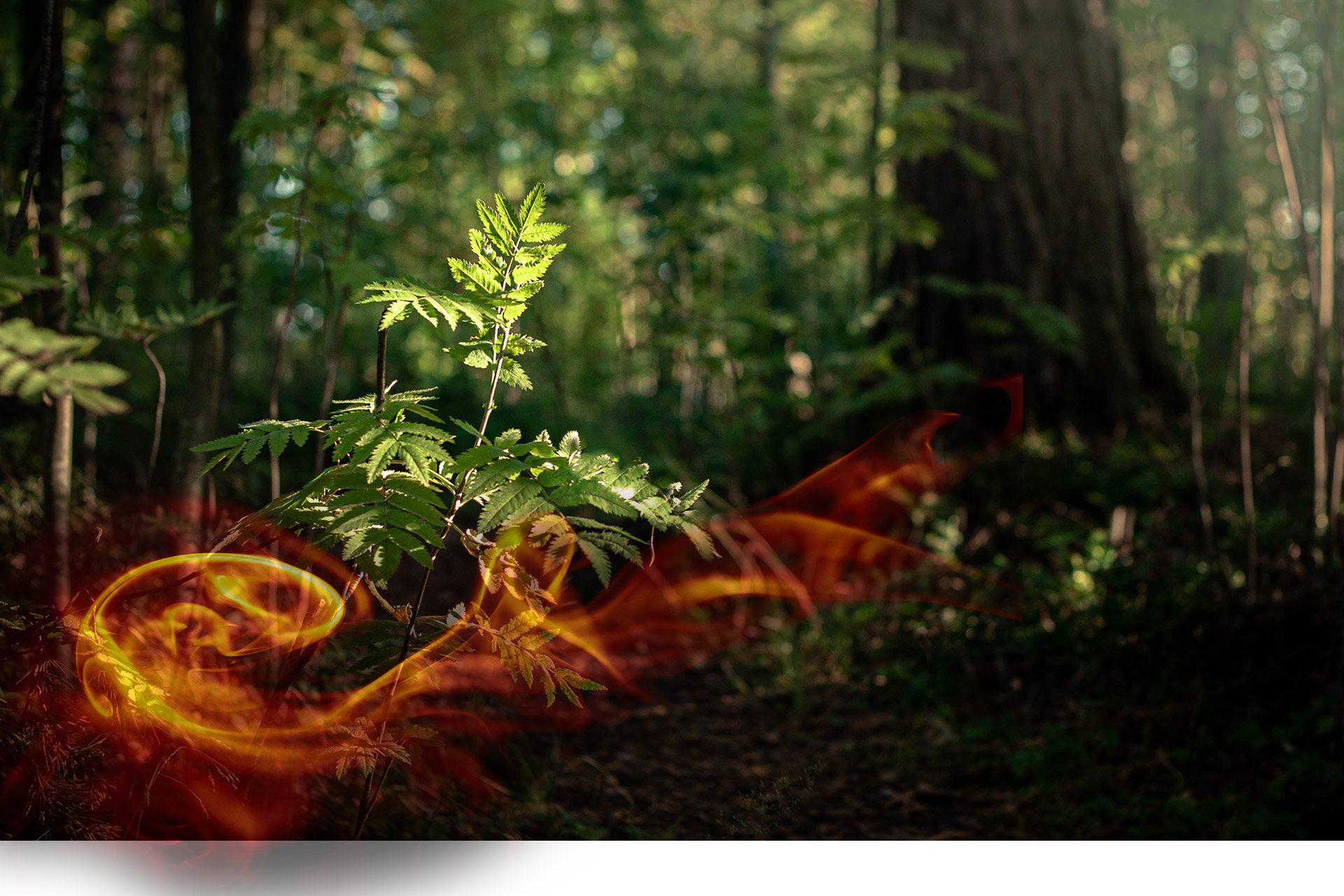THE FIRE WHISPERERS
In the old days, the Native people were fire whisperers. They used fire to drive game they hunted, to clear land for agriculture, and other purposes. This helped create the vast tracts of savanna and prairies that the European settlers found when they arrived in North America in the 16th century. They quickly adopted controlled burning for farms and village communities. It was in the South, especially the coastal plain, that the practice took off, and in fact continues to this day: the Southeast burns much more land than we do here in California, primarily because the Southeast understands the importance of controlled fire, especially when it comes to open range herding of livestock. This may be due in part that the Scottish and Irish immigrants who came to America found Native fire management and herding practices similar to their own Celtic traditions. (Could it be that they brought their own Dragons of Fire and Rain from the Celtic lands…?)
But not everyone was interested in the wisdom of fire management. According to some sources, the timber and paper industries very much opposed controlled burning that the livestock ranchers practiced, preferring to grow as many trees as possible to produce their products. As large commercial timber companies clear-cut vast mountain ranges, the young U.S. Forest Service began to grow concerned about the destruction of forests. As well-intentioned as those concerns were, they were mistaken in a few critical areas, namely that controlled fire destroyed the grasses that livestock grazed on and impoverished the soil.
So it was that a national forest management policy fiercely opposing controlled burning began to take shape. In the 1920’s, federal funds were denied to states that permitted controlled burning, and the American Forestry Association sponsored a massive propaganda campaign that utilized films, radio, and print to warn people (3 million!) in the rural South about the dangers of wildfire.
In the 1940’s, the National Advertising Council, the U.S. Forest Service and state forestry agencies created the Smokey Bear campaign, often called “the most effective advertising campaign in history.” It even leveraged select Bible passages thought to be anti-fire. Some of you might remember Smokey Bear—the campaign is still running. While the website has a brief page explaining the benefits of controlled fire, its overarching message still runs counter to the idea of fire as a way to care for the land. Not even Dragons can counter the power of a well-funded marketing campaign. They carry the ancient wisdom of forest and rain stewardship, not pamphlets.
The story of wildfire stewardship is long, and certainly merits a good read. Today, in a world that continues to warm and experience longer droughts and fiercer storms, wildfires are increasing in intensity—in large part because there is so much more brush, small trees, and other vegetation to burn. Our firefighters are reaching their breaking point… each year the wildfire season lengthens at both ends. The Dragons, too, are growing weary. The Dragons and the firefighters are the only ones that stand between us and a major humanitarian disaster.
But there is hope. We are finally coming to the realization that perhaps the concepts of fighting and battle might not be the wisest to apply to wildfire management. Many are calling for a renewed respect for the old ways of caring for the land and integrating controlled burning into the management of our forests and our wildlands: not only the Native people, but firefighters, scientists, educators, officials, and many others.
We have put together a list of groups and organizations working to re-introduce the concept of controlled burning to the stewardship of lands and communities. Visit their sites, learn about them… and if you are so inspired, support and volunteer for them!
350 BUTTE COUNTY
A volunteer organization that aims to “raise awareness and empower individuals to take local action toward building resilience for our community as solutions to our climate emergency.”
CULTURAL FIRE MANAGEMENT COUNCIL (CFMC)
A community-based organization that supports fire use and cultural resource management. Its mission is to “facilitate the practice of cultural burning on the Yurok Reservation and Ancestral lands, which will lead to a healthier ecosystem for all plants and animals, long term fire protection for residents, and provide a platform that will in turn support the traditional hunting and gathering activities of Yurok.”
FIRE ADAPTED COMMUNITIES LEARNING NETWORK (FAC NET)
FAC Net empowers leaders, develops tools, and creatse and shares approaches to increase wildfire resilience and change our relationship with fire.
FIREFIGHTERS UNITED FOR SAFETY, ETHICS AND ECOLOGY (FUSEE)
Composed of wildland firefighters, fire scientists and managers, educators and students, rural residents, forest conservationists, and other concerned citizens, FUSEE recognizes that wildfire is not our enemy and works toward better, safer and more ecologically minded wildland fire management.
THE FIRE RESTORATION GROUP
This organization works to expand efforts to integrate fire policy with fire ecology, and to promote science-based management of fire and forests in California.
INDIGENOUS PEOPLES BURNING NETWORK (IPBN)
The mission of the Yurok-Hupa-Karuk IPBN is to “revitalize the implementation of cultural burns in native communities through the
cultivation of an intertribal support system in which traditional ecological knowledge is shared and our rights are protected.”
NORTHERN CALIFORNIA PRESCRIBED FIRE COUNCIL
The Council facilitates collaboration among state and federal agencies, academic institutions, tribes, and other entities interested in furthering the responsible use of prescribed fire in Northern California.
THE WATERSHED CENTER
The Watershed Research & Training Center provides land and watershed management services, leads state biomass and fire resilience partnerships, and facilitates partnerships with communities, organizations, and public agencies.
Do you run a wildfire resilience organization, or would like to recommend one to be added to this list? Let us know!
Header design a composite of images by Marek Piwnicki and Oskari Manninen



